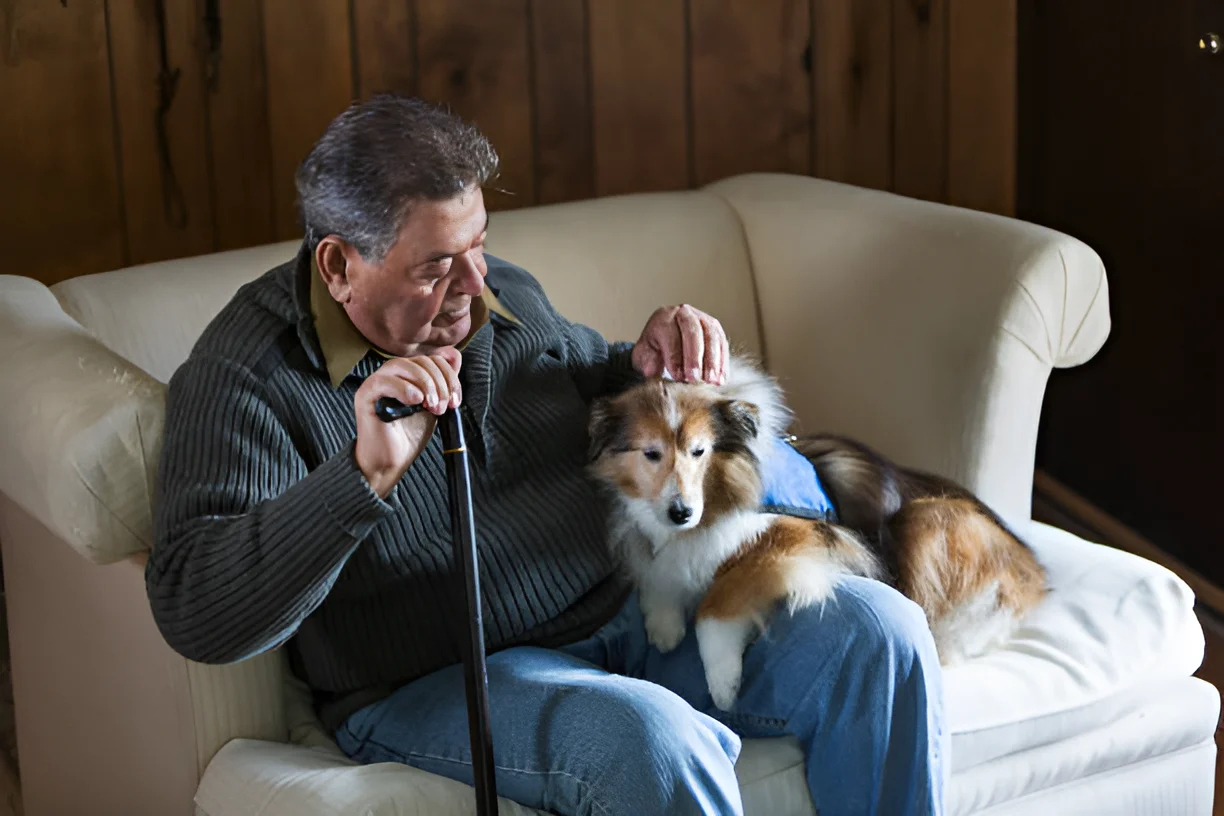Training a dog to be a therapy dog typically takes several months to a year, depending on the dog’s temperament and the training program. This journey involves dedication, patience, and a deep bond between the handler and the dog.
Therapy dogs bring comfort, joy, and healing to people in various settings, from hospitals and nursing homes to schools and disaster areas. These special dogs are trained to provide emotional support and companionship, making a significant impact on the lives of those they visit. But how long does it take to train a dog to be a therapy dog? In this comprehensive guide, we’ll explore the training process, the qualities needed in a therapy dog, and the steps involved in preparing your dog for this rewarding role.
What Is a Therapy Dog?
A therapy dog is trained to provide affection, comfort, and support to people in need. Unlike service dogs, therapy dogs do not perform specific tasks for individuals with disabilities. Instead, they offer emotional benefits through their presence and interactions. Therapy dogs visit various facilities, including hospitals, nursing homes, schools, and disaster sites, to help reduce stress, anxiety, and loneliness.
Qualities of a Good Therapy Dog
Not every dog is suited for therapy work. The ideal therapy dog possesses certain qualities that make them effective in their role:
- Calm and Gentle: Therapy dogs must remain calm and composed in various environments, even when faced with loud noises or sudden movements.
- Friendly and Sociable: They should enjoy interacting with people of all ages and be comfortable being touched and petted.
- Obedient and Well-Trained: A solid foundation of obedience is crucial for therapy dogs to follow commands and behave appropriately in different settings.
- Adaptable: Therapy dogs should be able to adapt to new environments and situations without becoming stressed or anxious.
- Healthy: Regular veterinary check-ups and a healthy lifestyle are essential to ensure the dog can perform their duties effectively.
The Training Process
Training a therapy dog involves several stages, each building on the previous one to ensure the dog is well-prepared for their role. Here’s a detailed look at the training process:
1. Basic Obedience Training
The foundation of any therapy dog training program is basic obedience. This includes commands such as sit, stay, come, and heel. Dogs must learn to respond reliably to these commands in various environments. Basic obedience training typically takes several weeks to a few months, depending on the dog’s prior training and temperament.
2. Socialization
Socialization is a critical aspect of therapy dog training. Dogs must be comfortable around different people, animals, and environments. This involves exposing the dog to various settings, such as parks, shopping centers, and public transportation, to ensure they remain calm and well-behaved. Socialization should begin early in the dog’s life and continue throughout their training.
3. Advanced Obedience and Skills Training
Once the dog has mastered basic obedience, they can move on to advanced training. This includes more complex commands and skills, such as walking calmly on a loose leash, ignoring distractions, and maintaining focus on the handler. Advanced training also involves teaching the dog specific behaviors needed for therapy work, such as sitting quietly while being petted and interacting gently with people.
4. Canine Good Citizen (CGC) Certification
Many therapy dog organizations require dogs to pass the American Kennel Club’s Canine Good Citizen (CGC) test. This test evaluates the dog’s manners and obedience in various situations. The CGC certification is a valuable step in the training process, as it demonstrates the dog’s readiness for therapy work.
5. Therapy Dog Training and Certification
After obtaining the CGC certification, dogs can begin specialized therapy dog training. This training focuses on the specific skills and behaviors needed for therapy work, such as visiting patients in hospitals, interacting with children in schools, and providing comfort in disaster areas. The training duration varies but typically takes several months to a year. Upon completion, the dog must pass a therapy dog certification test administered by a recognized organization.
Factors Affecting Training Duration
The time it takes to train a therapy dog can vary based on several factors:
- Dog’s Age and Temperament: Younger dogs may take longer to train, while older dogs with prior training may progress more quickly. A dog’s temperament also plays a significant role; calm and adaptable dogs may require less time to train.
- Handler’s Experience: Experienced handlers may be able to train their dogs more efficiently than those new to dog training.
- Training Consistency: Regular, consistent training sessions are crucial for success. Inconsistent training can prolong the process.
- Training Program: The structure and intensity of the training program can impact the duration. Comprehensive programs that cover all aspects of therapy work may take longer but provide thorough preparation.
Benefits of Therapy Dog Training
Training a dog to be a therapy dog offers numerous benefits, both for the dog and the people they serve:
- Emotional Support: Therapy dogs provide comfort and companionship, helping to reduce stress, anxiety, and loneliness.
- Physical Health Benefits: Interacting with therapy dogs has been shown to lower blood pressure, reduce heart rate, and increase levels of endorphins and oxytocin in humans.
- Enhanced Bond: The training process strengthens the bond between the handler and the dog, fostering a deeper connection and mutual trust.
- Community Impact: Therapy dogs make a positive impact on the community, bringing joy and comfort to those in need.
Conclusion
Training a dog to be a therapy dog is a rewarding journey that requires time, dedication, and a strong bond between the handler and the dog. While the training process typically takes several months to a year, the benefits of having a therapy dog are immeasurable. By following a structured training program and ensuring your dog possesses the necessary qualities, you can prepare your furry friend for a fulfilling role as a therapy dog, bringing comfort and joy to countless lives.
The photo featured below the post headline is Credit: kali9/istockphoto
I hope you find this post helpful and informative. If Yes’ feel free to share it with your friends!
Frequently Asked Questions
Can any dog become a therapy dog?
While many dogs can become therapy dogs, they must possess certain qualities such as calmness, friendliness, and obedience. Not all dogs are suited for therapy work.
How old should a dog be to start therapy dog training?
Dogs should be at least one year old before starting therapy dog training. This ensures they have reached a level of maturity and stability needed for the role.
What is the Canine Good Citizen (CGC) test?
The CGC test is a certification program by the American Kennel Club that evaluates a dog’s manners and obedience. It is often a prerequisite for therapy dog certification.
How often should I train my dog?
Consistent, daily training sessions are recommended. Short, frequent sessions are more effective than long, infrequent ones.
What should I do if my dog shows signs of stress during training?
If your dog shows signs of stress, such as excessive panting, whining, or avoidance behaviors, take a break and reassess the training approach. Consult a professional trainer if needed.

